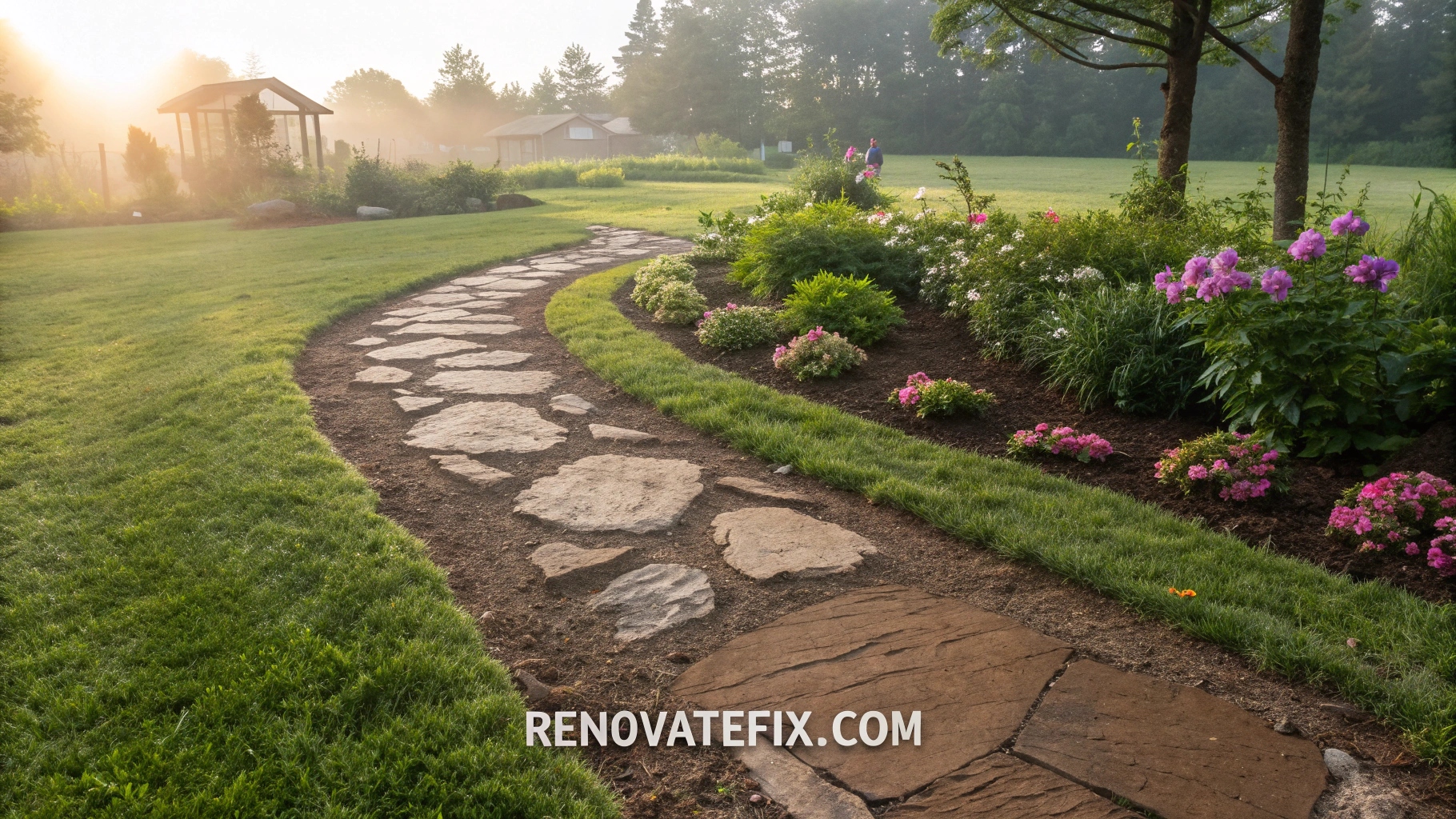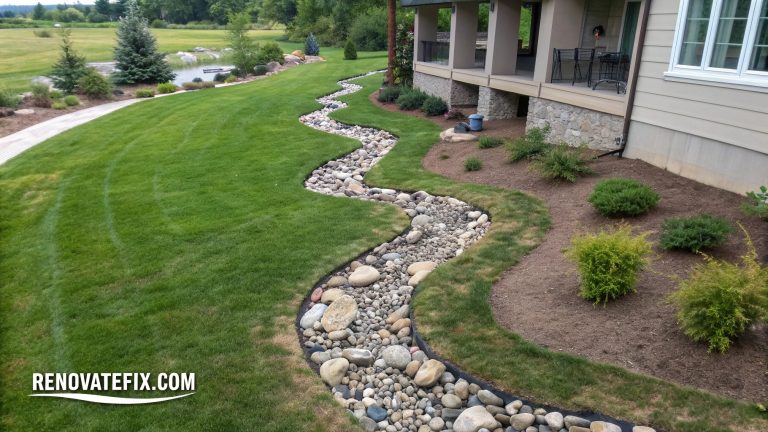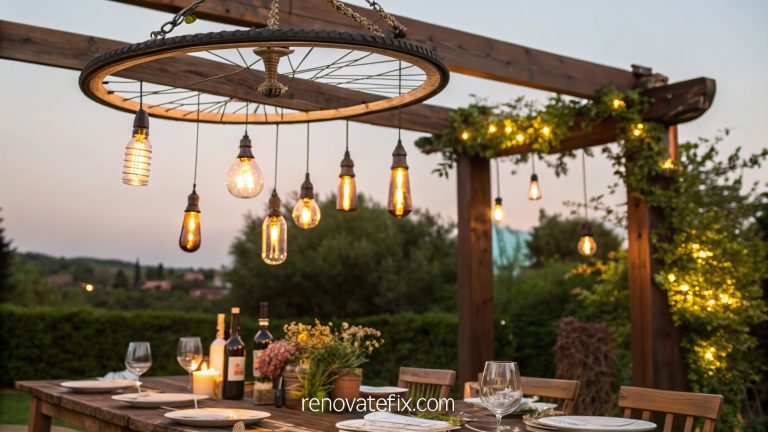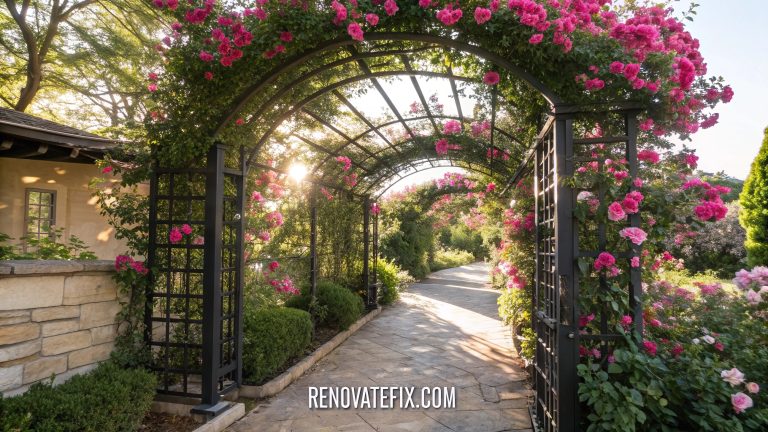15 Creative Landscape Edging Ideas for Your Garden
A well-defined border between your lawn, garden beds, and walkways not only enhances your outdoor space visually but also serves practical purposes.
Landscape edging creates clean lines, prevents grass from encroaching into beds, and holds soil and mulch in place.
Whether you’re looking for budget-friendly options or willing to invest in something more elaborate, these fifteen edging ideas will help elevate your garden’s appearance while making maintenance easier.
From natural materials that blend seamlessly with your environment to eye-catching alternatives that make bold statements, there’s something for every garden style and budget.
1. Natural Stone Border
Raw, irregular stones arranged along garden perimeters bring rustic charm to any outdoor setting.
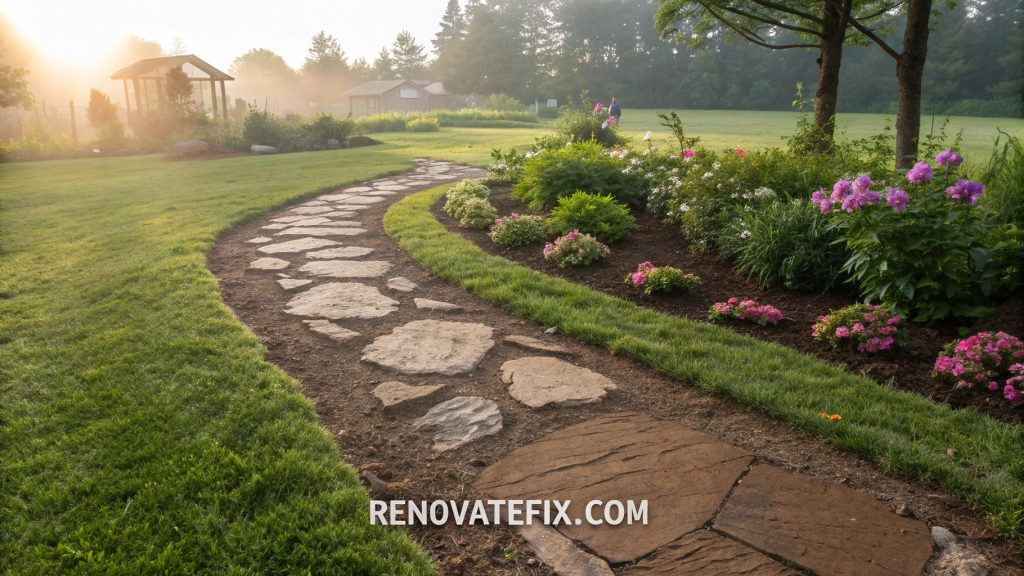
Partially buried in soil for stability, these weathered rocks create a harmonious transition between different garden zones while allowing small ground-covering plants to grow between gaps.
Durability makes this option perfect for areas experiencing harsh weather conditions.
2. Brick Herringbone Pattern
Classic red clay bricks arranged in zigzag formation provide elegant definition between lawn and planting areas.
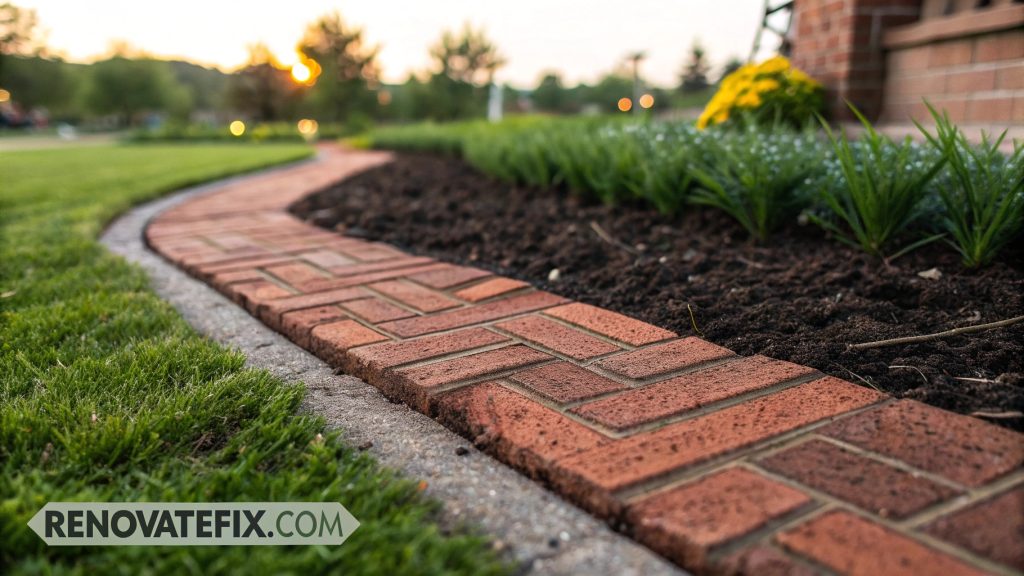
Installed at an angle against each other, this pattern adds visual interest while offering substantial resistance against lawn mower damage.
Partially sunk into ground level, these sturdy barriers last decades with minimal upkeep.
3. Woven Willow Hurdles
Flexible willow branches woven horizontally between vertical stakes form beautiful low fences along garden perimeters.
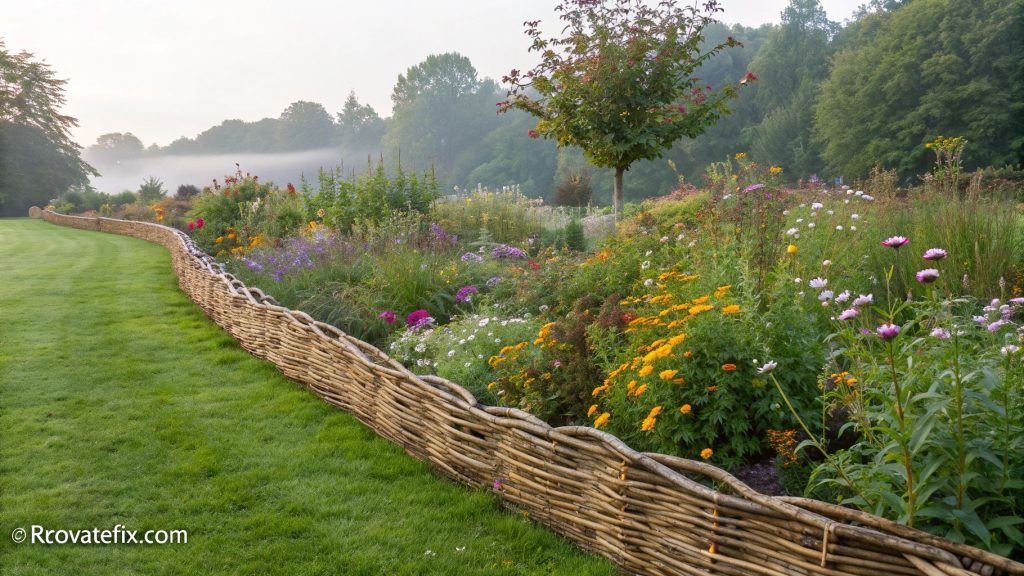
Rising approximately six inches above ground, these natural barriers add rustic countryside appeal while effectively holding back soil.
Over time, weathering creates silver-gray patina enhancing organic aesthetic appeal.
4. Gabion Wire Cages
Metal mesh containers filled with various sized stones offer industrial-chic borders for modern landscapes.
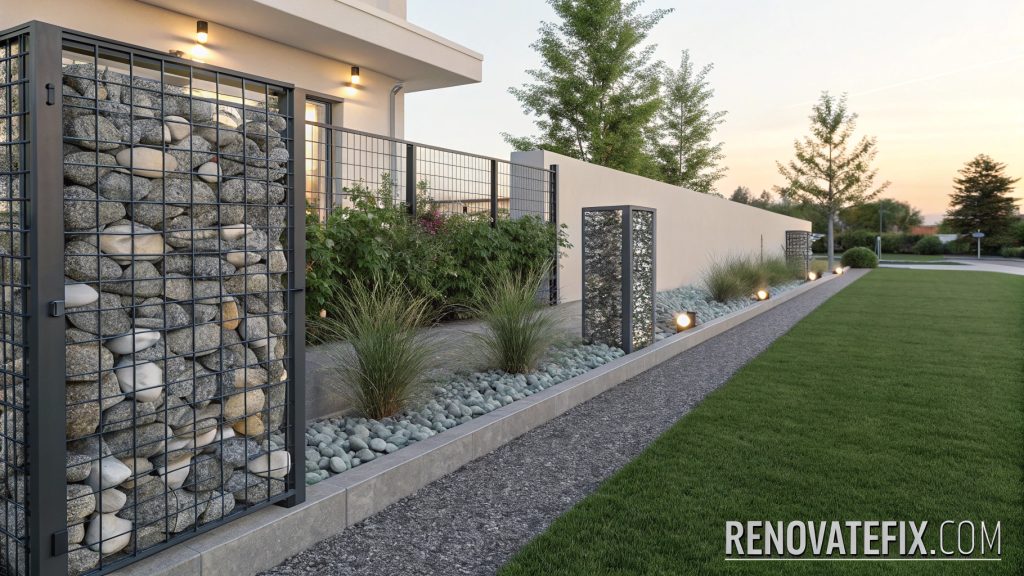
Ranging from ankle to knee height, these structures provide solid barriers while allowing drainage between garden sections.
Customize with different rock types—river stones, crushed granite, recycled glass—for personalized appearance.
5. Recycled Glass Bottles
Colorful glass bottles buried neck-down create whimsical borders with surprising visual impact.
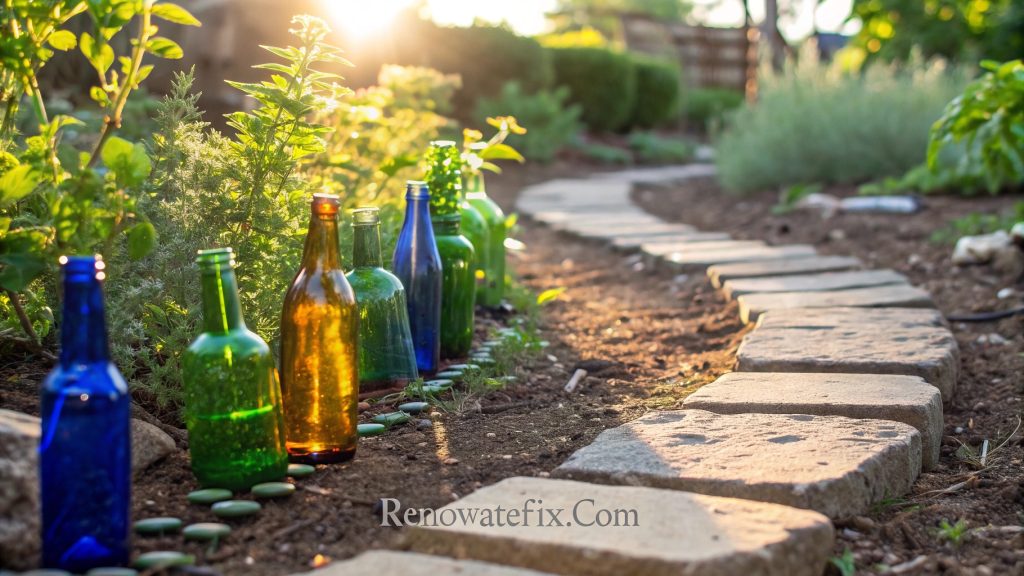
Arranged in rows with tops exposed, sunlight filters through varied hues casting rainbow patterns across garden spaces.
Bottles can form straight lines or gentle curves, spacing adjusted based on desired density.
6. Corten Steel Strips
Rust-colored weathering steel strips bend easily to form fluid boundaries between landscape elements.

Rising just inches above soil, these sophisticated barriers develop rich patina over months while maintaining structural integrity for decades.
Clean lines complement both formal gardens and naturalistic plantings.
7. Log Rounds
Cross-sections from fallen trees placed partially buried in soil create charming woodland-inspired edges around flower beds.
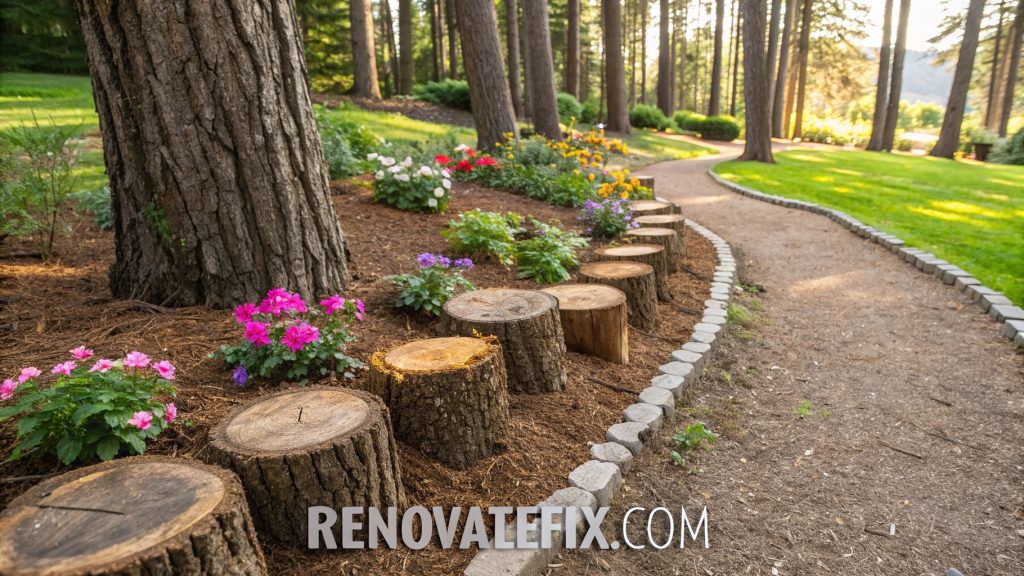
Varying diameters arranged closely together form undulating borders reminiscent of fairy gardens.
Natural wood gradually decomposes over years, adding nutrients back into surrounding soil.
8. Concrete Curbing
Continuous poured concrete forms sleek, uninterrupted borders following any desired shape around garden perimeters.

Smooth surfaces painted or stained complement architectural home features while effectively blocking grass runners.
Machine-extruded versions allow rapid installation for larger properties requiring extensive edging solutions.
9. Wattle Fencing
Thin branches woven between wooden stakes form delicate barriers around vegetable patches or flower gardens.
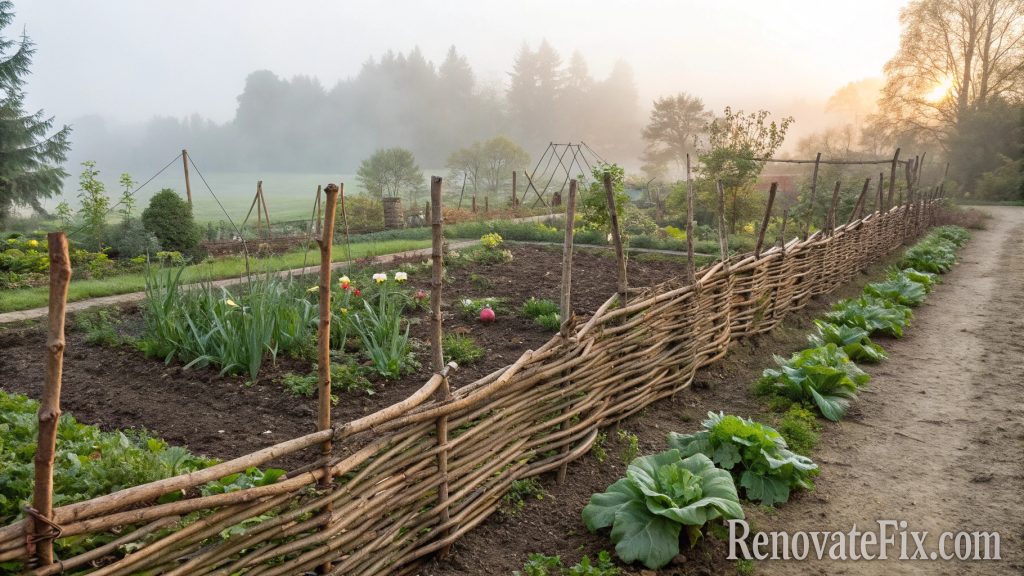
Standing approximately eight inches tall, these biodegradable borders bring old-world cottage garden atmosphere while effectively marking boundaries.
Material gradually returns to earth after several growing seasons.
10. Seashell Borders
Beach-collected shells arranged closely together create coastal-inspired edges perfect for seaside gardens.
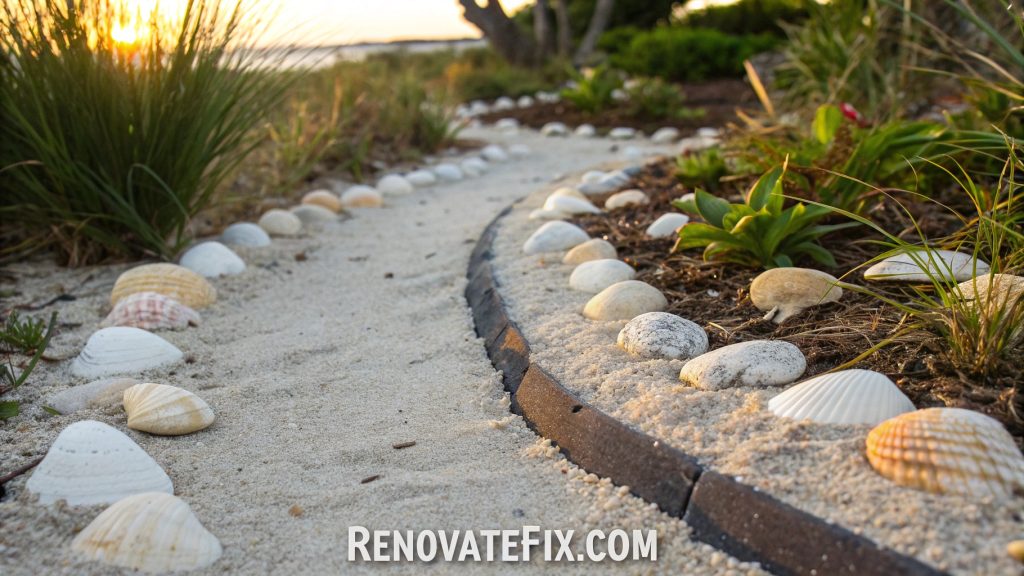
Larger specimens partially buried with smaller pieces filling gaps between them form organic borders reflecting maritime themes.
White surfaces brighten shady areas while gradually releasing calcium into acidic soils.
11. Mosaic Tile Work
Broken ceramic pieces arranged in artistic patterns form colorful permanent borders around special garden areas.
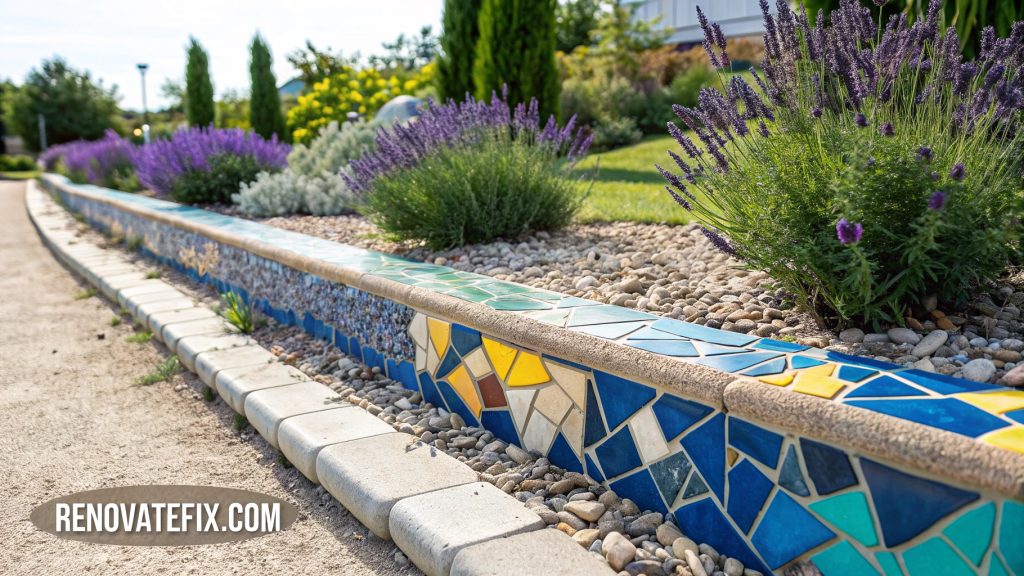
Set in mortar base, these durable edges withstand weather extremes while adding artistic flair.
Patterns range from abstract designs to representational motifs reflecting personal interests or heritage.
12. Basket Weave Bricks
Standard pavers placed alternating vertically and horizontally create intricate patterns reminiscent of woven fabric.
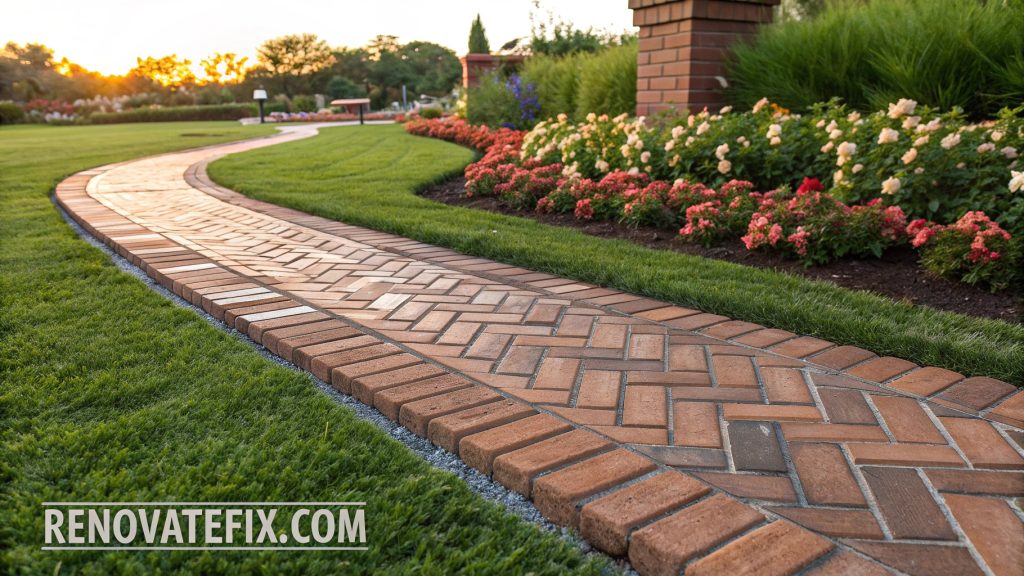
Partially buried with tops flush against lawn height, this arrangement prevents grass migration while allowing easy mower access.
Brick color selections complement home exterior or contrast purposefully for visual interest.
13. River Rock Gradients
Smooth water-worn stones arranged from smallest to largest create natural-looking transitions between garden zones.
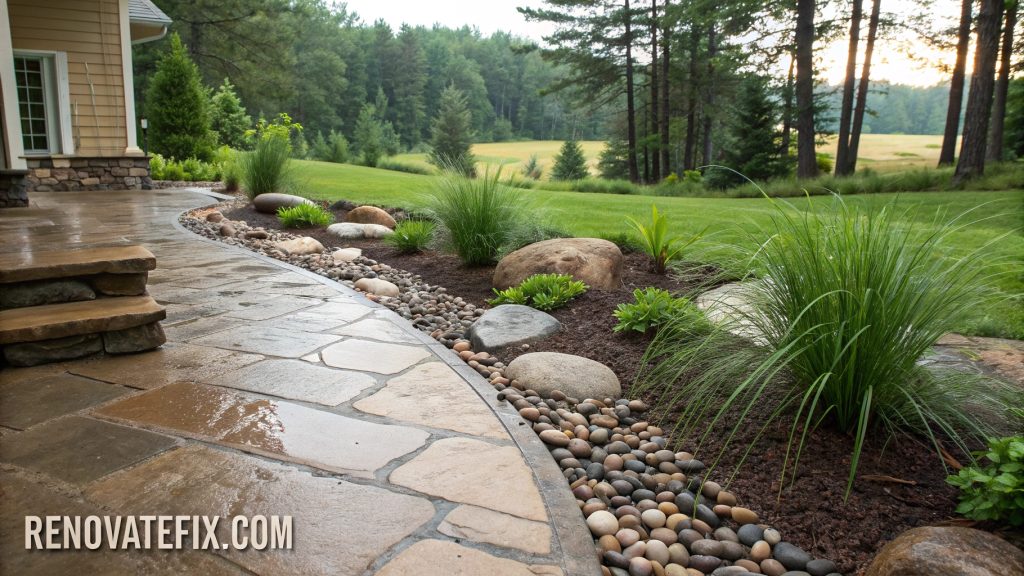
Partially embedded in soil following contours of landscape, these borders mimic streambed formations.
Various rock colors—gray, tan, white—blend harmoniously with surrounding plantings.
14. Living Herb Borders
Aromatic low-growing herbs planted densely form functional green edges around vegetable gardens or pathways.

Thyme, oregano, chamomile spread horizontally creating soft cushions releasing fragrance when brushed against.
Regular trimming maintains neat appearance while providing fresh culinary harvest.
15. Puncheon Log Slices
Thick logs split lengthwise and driven vertically into ground create substantial barriers between landscape sections.
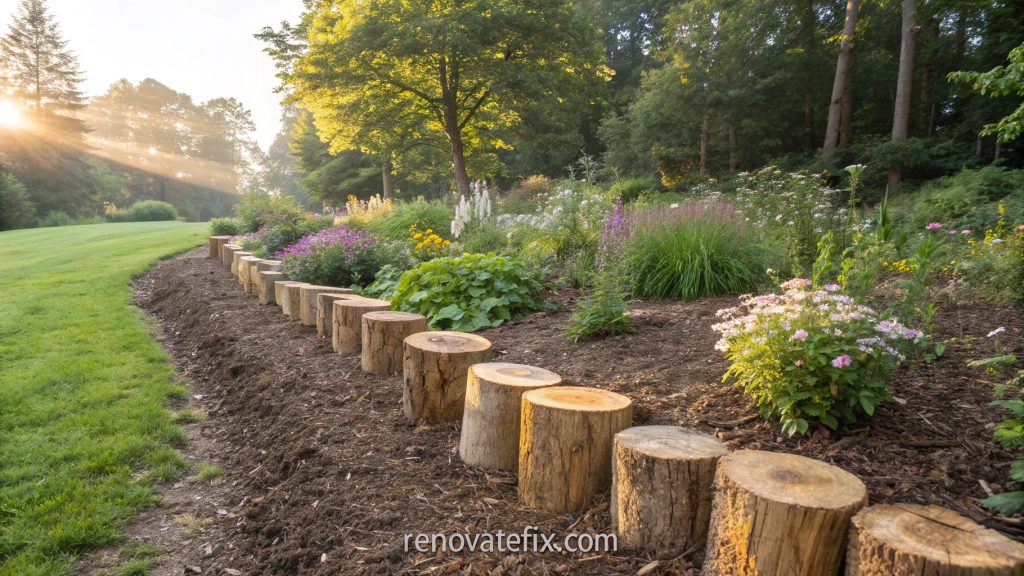
Standing six inches aboveground, these rustic edges prevent soil erosion on slopes while adding woodland character.
Bark removal optional depending on desired aesthetic and longevity concerns.
Conclusion
Landscape edging serves as both functional necessity and artistic opportunity in garden design.
Beyond simply separating spaces, thoughtfully chosen borders enhance overall aesthetic while reducing maintenance requirements.
Whether your preference leans toward natural materials harmonizing with surroundings or bold statements creating visual interest, implementing quality edging solutions rewards gardeners with cleaner lines and more defined spaces.
Consider your garden’s specific needs—soil retention, grass control, visual definition—alongside your personal style when selecting from these diverse options.
With proper installation, most edging solutions will continue performing beautifully for many seasons, making them worthwhile investments in your outdoor living environment.

